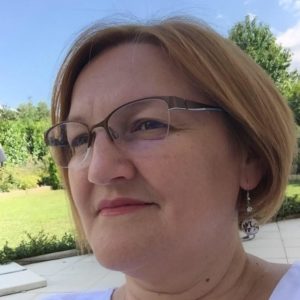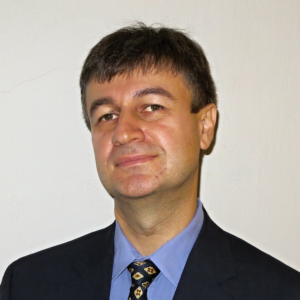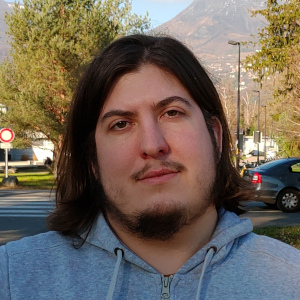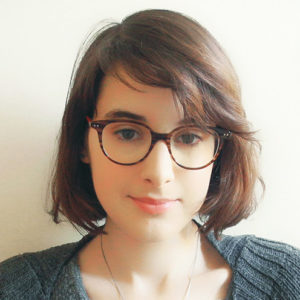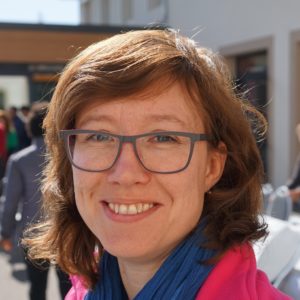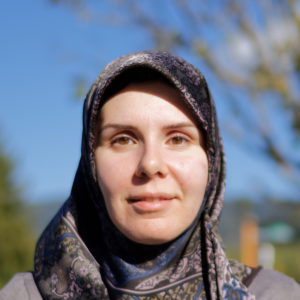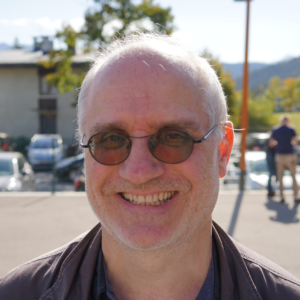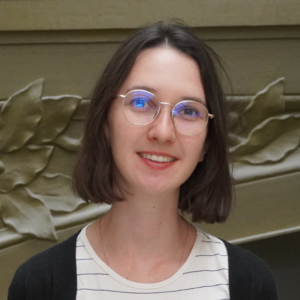Overview
The group covers all aspects of fundamental physics related to spin electronics by employing a wide range of theoretical approaches including ab initio, tight-binding, free electron and diffusive methods, combined with micromagnetic simulation approaches based on solution of Landau-Lifshitz-Gilbert (LLG) equation. This allows explaining experimental observations, providing solutions for specific problems and predicting novel properties and phenomena guiding the experimental work to optimize spintronic nanostructures.
Research directions
Electronic structure and magnetic properties of materials from first principles
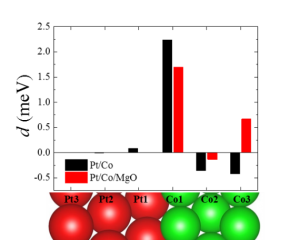
Ab initio calculations based on DFT are performed in order to provide insights into fundamental mechanisms of various spintronic phenomena, and to propose novel materials and their efficient combinations with required electronic structure and magnetic properties for optimal performance of spintronic devices.
Spin-dependent transport theories
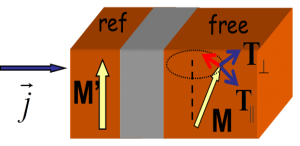
We employ tight-binding, free electron and diffusive approaches including Green function techniques in the framework of Keldysh and Kubo formalisms, in order to describe spin and charge transport properties in magnetic nanostructures with non-collinear magnetic moments in vertical, lateral and complex geometries.
Theoretical concepts for organic and graphene spintronics
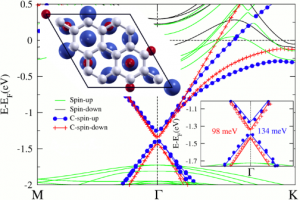
The goal of this topic is to harvest theoretically novel spin-dependent properties (e.g. proximity effects and defect induced magnetism etc.) in organic, graphene and related 2D materials based structures in the context of emerging field of graphene spintronics.
Micromagnetic modeling
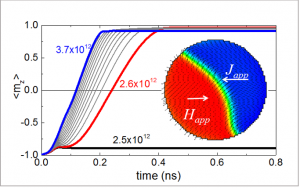
Magnetization dynamics (macrospin and micromagnetic) simulations under applied magnetic field and/or spin polarized currents are developed to address functionalities of spintronic devices (e.g. magnetization switching, synchronization and modulation for oscillators) in various geometries. Straightforward analytical models are developed to supplement fast and efficient understanding of the magnetization dynamics.
The team
Former members
Post-docs
- Ali HALLAL (2015-2019)
- Sergey NIKOLAEV (2015-2017)
- Debapriya CHAUDHURY (2016-2018)
- Cristian ORTIZ PAUYAC (2016-2017)
- Hongxin YANG (2013-2015)
PhD
- Daniel SOLIS LERMA (2016-2020)
- Paulo COELHO (with Magnetic Sensors Group, 2014-2017)
Internships
- Libor VOJACEK (2020)
- Brian CHARLES (with MRAM Group, 2016)
Projects
- ANR SpinSpike (2021-2024)
- ANR UFO (2021-2024)
- EU H2020 FET Project Flagship “Graphene” Core 3 (2020-2023)
- ANR MAGICVALLEY (2018-2021)
- ANR FEOrgSPIN (2018-2021)
- EU H2020 FET Project Flagship “Graphene” Core 2 (2018-2020)
- ANR JCJC MATEMAC-3D (2017-2020)
- EU H2020 ICT Project “SPICE” (2016-2020)
- EU H2020 ICT Project “GREAT” (2016-2019)
- ANR ELECSPIN (2016-2019)
- EU H2020 FET Project Flagship “Graphene” Core 1 (2016-2018)
- EU FET FP7 Project Flagship “Graphene” (2013-2016)
- EU M-ERA.NET HEUMEM supported via ANR-DFG (2014-2017)
- UGA Émergence et partenariat stratégique avec Western Digital (2015-2017)
- Samsung SGMI (2014-2017)
- ANR SOSPIN (2013-2016)
- ANR NMGEM (2010-2015)
- AGI14SMI15 AGIR (2014-2015)
Partners
- Transilvania University, Brasov, Romania
- IRIG/PHELIQS, Grenoble, France
- Institut Néel, Grenoble, France
- Unité Mixte Physique CNRS/Thalès, Palaiseau, France
- Laboratoire de Physique des Solides, Orsay, France
- Catalan Institute of Nanotechnology, Barcelona, Spain
- Institut Jean Lamour, Nancy, France
- Moscow Lomonosov State University, Moscow, Russia
- King Abdullah University of science and technology, Thuwal, Saudi Arabia
- University of Puerto Rico, San Juan, PR, USA
- Western Digital Corporation, CA, USA
- University of Bielefeld, Germany
- University of Kaiserslautern, Germany
- Max Planck Institute for Chemical Physics of Solids, Dresden, Germany
- Lawrence Berkeley National Laboratory, Berkeley, CA, USA
- ETH, Zurich, Switzerland
- NIMTE, Ningbo, China
Recent news
- FEOrgSpin – An ANR Project (October 01st, 2018)

Overview FEOrgSpin project has been accepted in the framework of AAPG ANR 2018 call. This collaborative research project aims to expand current knowledge on ferroelectric control of spin polarization at different spinterfaces comprising ferromagnets (FM) and ... - MAGICVALLEY – An ANR project (August 30th, 2018)

MAGICVALLEY stands for MAGnetism InduCed VALLEY polarization in large scale 2D materials (2018-2022). Objectives In the monolayer limit, two dimensional (2D) transition metal dichalcogenides (2H-MX2, with M=Mo, W and X=S, Se) are semiconductors with a sizeable ... - Seminar: Towards organic spintronics: embedded many-body perturbation approach for metal-molecule spinterface (June 12th, 2018)

Monday, June 25th, 11 a.m, room 434A “Towards organic spintronics: embedded many-body perturbation approach for metal-molecule spinterface” by Jing Li, condensed matter theory group, Neel Institute, Grenoble Abstract Organic spintronics is a young and rising research field ... - Spin Hall and Spin Swapping Torques in Diffusive Ferromagnets (May 30th, 2018)

A complete set of the generalized drift-diffusion equations for a coupled charge and spin dynamics in ferromagnets in the presence of extrinsic spin-orbit coupling is derived from the quantum kinetic approach, covering major transport phenomena, ... - [POSITION FILLED] Post-doctoral position – Finite element modeling for spintronics (May 28th, 2018)
![[POSITION FILLED] Post-doctoral position - Finite element modeling for spintronics](https://www.spintec.fr/wp-content/uploads/2018/01/logo_postdoc_FEM-100x70.png)
SPINTEC offers a theoretical post-doctoral position in finite element modeling for Spintronics. The objective of our project is to combine key ingredients for modern Spintronics and SpinOrbitronics modeling within the original finite element based multi-physics ...

